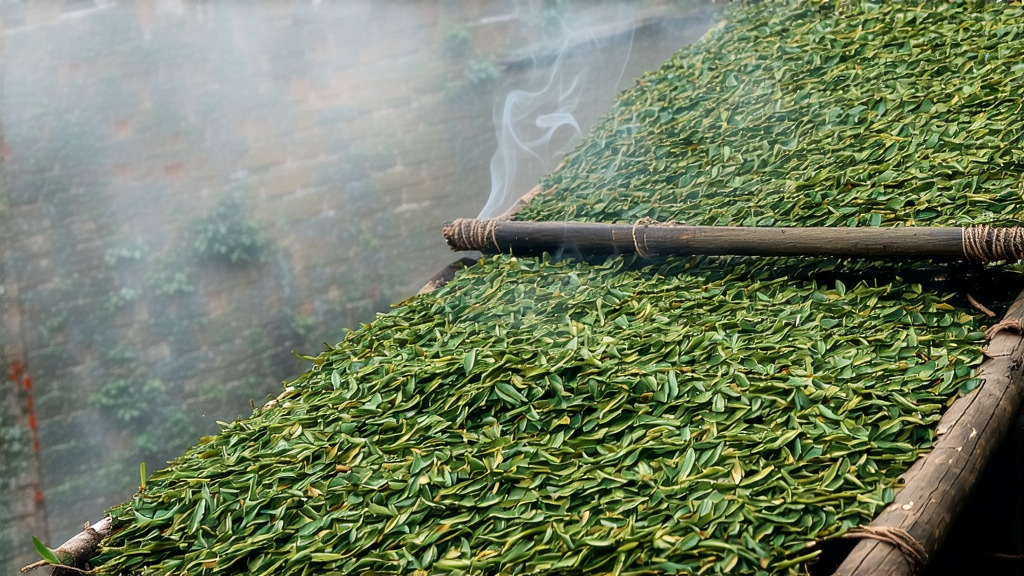
When European tea clippers first rounded the Cape of Good Hope in the late seventeenth century, the cargo that most excited London merchants was not silk or porcelain, but small, glossy, black-leafed chests from the port of Xiamen labeled “Bohea Souchong.” That fragrance—sweet resin, dried longan, and a whisper of campfire—was the world’s first encounter with what we now call black tea. The Chinese name, zheng shan xiao zhong, translates literally as “coarse leaf from the original mountain,” a humble phrase that belies its revolutionary history. In the craggy, pine-clad folds of the Wuyi Mountains of northern Fujian, Lapsang Souchong was born, and from it every other black tea on earth—Assam, Ceylon, Keemun, even Earl Grey’s bergamoted base—can trace its genetic and stylistic ancestry.
The terroir is inseparable from the tea. Wuyi’s vertiginous gorges trap humid maritime air, creating a perpetual mist that slows leaf growth and concentrates amino acids. The soil is a stony, mineral-rich laterite weathered from volcanic tuff; locals joke that the cliffs are “half rock, half tea.” At 600–1,200 m elevation, temperature swings between day and night are dramatic, encouraging the formation of floral terpenes and malt-rich polyphenols. Only two tiny valleys—Tongmu Guan and Guadun—are recognized as the “zhen shan,” the authentic mountain core whose leaves may legally bear the protected designation of origin granted by China’s National Agricultural Geographical Indication. Step outside those watersheds and the same cultivar, the same craft, yields a mere shadow of the original perfume.
Botanically, Lapsang Souchong is made from a group of Wuyi ecotypes collectively called Xiao Ye Zhong (small-leaf variety). Unlike the large-leaf Assamica strains that fuel Indian black teas, these bushes are shy, slow-growing shrubs with leaves barely longer than a thumb nail. Their modest size means higher leaf-to-stem ratio, translating into a naturally sweet liquor free of coarse astringency. Growers let the plants rest for three full seasons, pruning only in late autumn, so that spring buds emerge plump and phosphorescent jade. Picking is a dawn ritual: only the unopened bud and the first two leaves are taken, when dew still beads the surface and enzymatic activity is at its peak. A single mu (one-sixth of an acre) yields barely fifteen kilograms of finished tea, a scarcity that explains why top-grade Tongmu Lapsang costs more per gram than silver.
The craft that follows is a dialogue between fire and time. Withering is conducted not on trays but on slatted bamboo racks suspended over dying embers of local Masson pine. The smoke is gentle, more aroma than heat; craftsmen call it wen xun, “warm kissing.” For eighteen hours they shuffle the leaves every twenty minutes, ensuring each blade absorbs an even cloak of phenols from the rising oils. When the leaf feels velvety and smells like caramelized pine nuts, it is rolled—first by machine to rupture cells, then by hand to twist the leaf into the tight, glossy strips that resemble pine needles. Oxidation proceeds in cedar-lined chests whose natural microflora inoculate the leaf with yeasts that amplify fruity notes. Finally comes the decisive act: firing over a pine-wood bonfire whose temperature spikes to 200 °C for ninety seconds, locking in the signature tarry sweetness and obsidian color. The entire cycle, from pluck to finished tea, takes no less than thirty-six hours and must be completed before the mountain’s evening fog rolls in, lest the leaf re-absorb moisture and dull its brilliance.
Connoisseurs divide Lapsang Souchong into two stylistic families. The traditional, or “smoky,” style is the one that stunned Europe: black leaves lacquered with golden tips, aroma like a pine-log cabin in winter. Yet inside Tongmu there is a quieter, more recent mutation called “unsmoked” or “original aroma” Lapsang. Invented in 2005 for the domestic market that favors clean, honey-like cups, it omits the final pine-firing, relying instead on careful withering and oxidation to coax natural notes of dried apricot